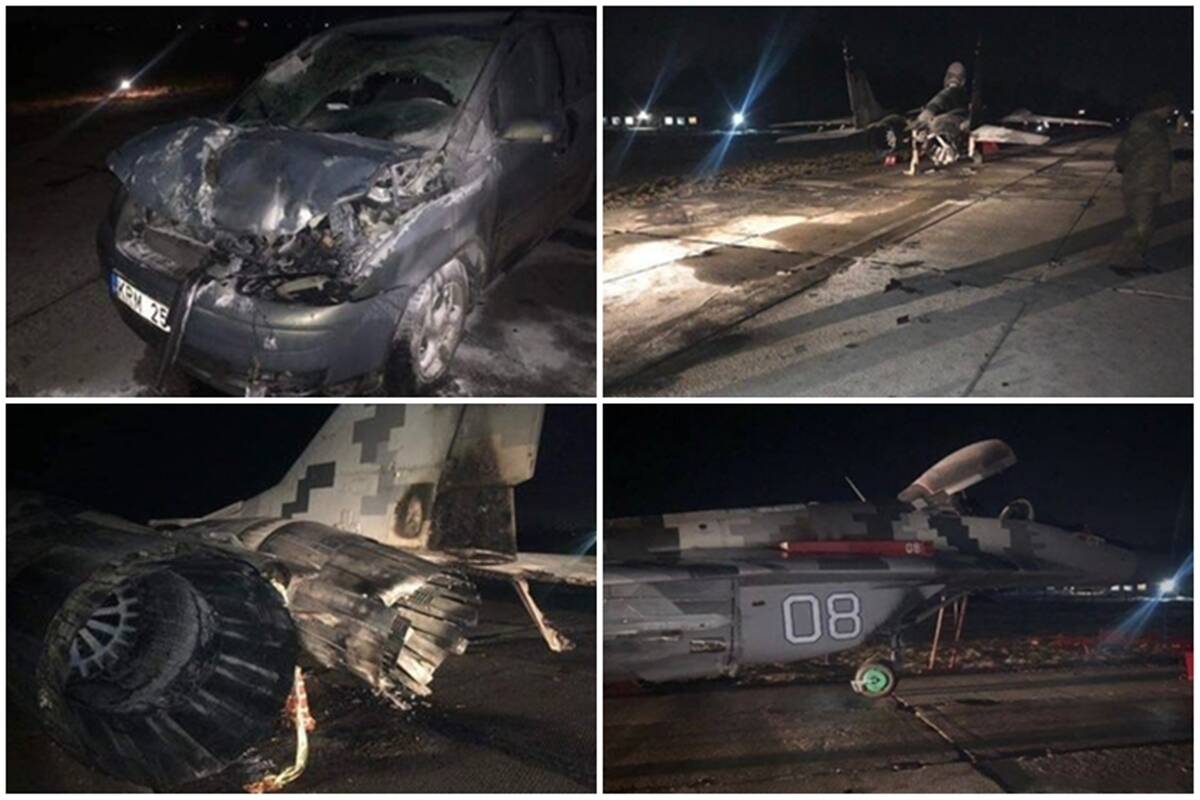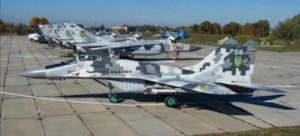Defence
Drunk Car Driver Crashes Into A Ukrainian MiG-29 Fighter Jet

In a strange incident of drunk driving, a Ukrainian Air Force Officer rams his Volkswagen Touran car into a parked MiG-29 fighter jet, causing a fire and destruction of both vehicles and singlehandedly reduced the country’s strength of MiG fighters by 4 percent.
No matter what mistakes you’ve made recently, they probably don’t compare to this Ukrainian captain who rammed a MiG-29 fighter with his Volkswagen Touran while drunk.https://t.co/GCQn5dHBwehttps://t.co/VJ2OeQfumn pic.twitter.com/XwszW5FNWD
— Rob Lee (@RALee85) March 12, 2021
The incident took place on March 10 at an air base near Vasilkov in central Ukraine. The incident occurred when the officer drove the car, was from the 40th Tactical Aviation brigade. The officer was intoxicated and rams his car into MiG-29’s scorched tail fin, rear stabilizer as well as damaged thrust nozzles. The Touran was also damaged as the hood and windshield were smashed. Thankfully, no was seriously injured as the driver reportedly only received minor bruises and admitted to the hospital immediately. The driver is now facing charges and criminal proceedings are being carried out by a group of prosecutors from the military prosecutor’s office.
According to Ukrainian Air Force, the aircraft shall be most likely decommissioned from service and salvaged for spare parts. The country inherited the jets after collapse of the Soviet union, making them atleast 30 years old. Of those 24 jets, only 16 are frontline fighters, the remaining eight are used as training aircraft. This incident took out 4% of their fleet. The MiG-29 costs between $11-20 million. The MiG, whose number is 08 was apparently serving as a frontline fighter, where you can see a photo of Number 08 before the collision, Ukraine’s Air Force had planned to enter into an agreement last year with Israeli defense contractor Elbit to modernize 11 of the MiGs. The modernization effort was expected to cost $40 million per jet. It’s not clear if Number 08 was one of the those $40 million jets.

Defence
Russia’s NV.17 Hybrid Helicopter Aims to Balance Light and Heavy Helicopter Needs

As Western sanctions continue to impact Russia’s aviation sector, the country is making significant strides in advancing its domestic aerospace capabilities.
Despite the ongoing challenges, Russia has unveiled the Heliburo HB.17, a cutting-edge hybrid-powered medium-class helicopter that promises to reshape both commercial and military aviation.
The helicopter is currently in the technical design phase, with plans for its first flight slated for 2027. This marks a major step forward in Russia’s efforts to modernize its aviation fleet and reduce reliance on foreign technology.
This country tops visa rejections in the popular Schengen countries
The HB.17 is designed as a versatile, multi-role aircraft, capable of performing a wide range of functions. It is built to handle cargo transport, passenger carriage, reconnaissance, and close air support missions. With its robust design and flexible capabilities, the HB.17 is expected to meet the needs of both military and commercial operators, offering a solution for missions requiring a greater capacity than light helicopters but avoiding the limitations of larger aircraft.
One of the most innovative features of the HB.17 is its hybrid power plant. This combination of conventional and electric technologies enhances fuel efficiency, allowing the helicopter to stay airborne for up to seven hours without needing to refuel.
This extended operational endurance makes the HB.17 particularly well-suited for long-duration missions, providing a significant advantage over traditional helicopters. Additionally, the HB.17 will be equipped with modern avionics, ensuring advanced navigation, communication, and operational capabilities.
Qatar Airways Cargo and MASkargo Launch New Strategic Partnership
The HB.17 is positioned to compete with other medium-class helicopters such as the Kamov Ka-60/62 and the Mil Mi-38. However, its hybrid powerplant and modern avionics set it apart, offering a more efficient and technologically advanced alternative.
Its multi-role versatility, combined with its fuel efficiency and cutting-edge systems, gives it a competitive edge in the evolving aviation landscape. The introduction of the HB.17 follows recent reports of Russia receiving a new batch of armored vehicles from the UAE-based Streit Group.
Russia has traditionally focused on producing helicopters for defense purposes, but this time, it appears to be venturing into the civilian helicopter market with the HB.17.
This, along with the ongoing development of the HB.17, reflects Russia’s continued efforts to modernize its military assets and increase its self-reliance, even as sanctions continue to pressure its defense and aerospace sectors.
As Russia faces mounting geopolitical challenges, the HB.17 stands as a symbol of resilience, technological innovation, and determination to maintain its military and aviation capabilities.
-

 Aviation2 months ago
Aviation2 months agoMicrosoft Flight Simulator Raises $3 Million to Bring Back the An-225 Mriya
-

 Airlines2 months ago
Airlines2 months agoQatar Citizens Can Travel to the United States Without a Visa
-

 Aviation2 months ago
Aviation2 months agoQatar Airways bans these new Electronic Devices on plane
-

 Airlines2 months ago
Airlines2 months agoJapan Airlines Rolls Out Free Domestic Flights to International Passengers
-

 Defence2 months ago
Defence2 months agoWhich Country Has the Largest Fleet of Fighter Aircraft?
-

 Airport2 months ago
Airport2 months agoWestern Sydney Airport Welcomes Its First Plane After 6 Years of construction
-

 Airlines4 days ago
Airlines4 days agoDAMAC Air: Dubai’s New Luxury Airline Offers Free Flights for Registration
-

 Aviation2 months ago
Aviation2 months agoDid you know ? Once Boeing 747 carried 1088 passenger in 1991









